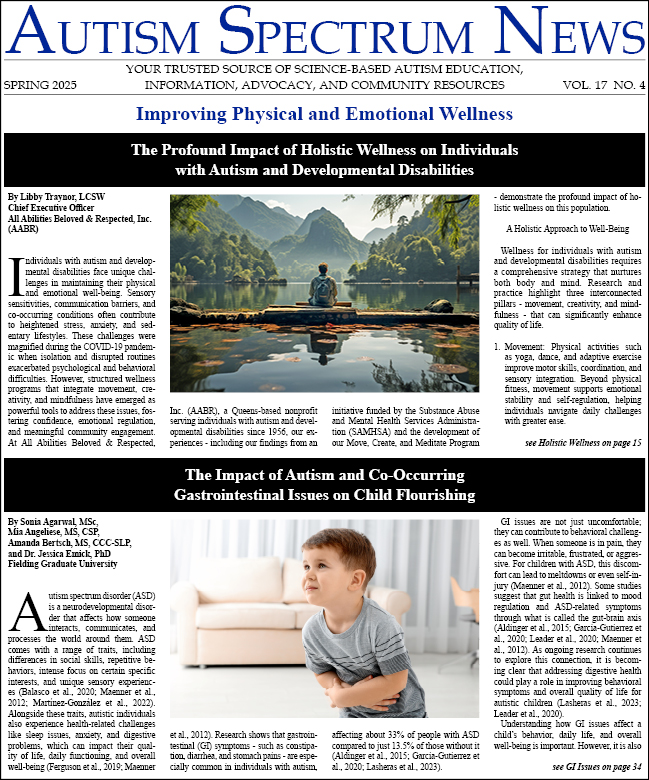-
Filling the Gaps in Healthcare: The Vital Role of Information Sharing for Individuals with Autism and Intellectual and Developmental Disabilities
Wading through the complex landscape of healthcare for individuals with autism and intellectual and developmental disabilities (I/DD) and their caregivers can be frustrating, often hindered by a variety of barriers unique to this population. While systematic and overwhelming, these challenges are...
-
What Is Health Equity and Why It Matters to Those with Disabilities
According to the 2022 summary of the Maternal and Child Health Bureau's National Survey of Children's Health, more than 14 million children had special healthcare needs. These children, in particular, are more likely to experience chronic physical, developmental, behavioral or...
-
Awareness and Acceptance: 10 Things I Wish Everyone Understood About Autism
Twenty years ago, my daughter, Annie, was diagnosed with autism. Throughout our journey, I have learned that not everyone is aware of or fully understands her disorder, and when they see or interact with us, they may not know what to do or say. Annie is now a thriving 22-year-old, and as I...
-
New Therapeutic Puppet Aids in Tele-Delivered Autism Therapy
A talking blue stuffed toy is not what comes to mind when most people think of an autism therapist. However, as therapy has found itself transformed in the last several years with the pandemic and rise of telehealth options, a therapist now can come in all shapes and sizes - including, in...
-
The Power of Sensory Integration: Enhancing Communication for Non-Speaking Individuals
Communication is complex and extends beyond verbal expression. This is especially important to understand in non-speaking individuals. Non-verbal cues such as facial expression, body language, and sensory experiences play crucial roles in conveying and understanding messages. Sensory integration...
-
Anderson Family Partners: Extended Family, Redefined
For Colleen Contreni, Family Liaison at Anderson Center for Autism, the concept of ‘extended family’ has long inspired her work. “I have always been a very family-oriented person, and this role at Anderson is a reminder that by cultivating a spirit of kinship among parents, caregivers, and...
-
An Autistic’s Vision for Neurodiversity-Affirming Therapy
As a neurodiversity community self-advocate, I have come across far too many stories of emotional distress and trauma in connection with neurodivergent individuals' lived behavioral therapy experiences. I understand where they're coming from and I empathize. As a late-identified autistic, I, like...
-
Teamwork: Building A Successful Neurodivergent-Neurotypical Marriage
As I sit down to write this, my husband and I just celebrated our 39th wedding anniversary. We met through a mutual friend - an ex-boyfriend of mine. Joseph and I had gone our separate ways a few months before I received a phone call from “Caper” (his chosen “call sign”). I was surprised by...
-
A How-To Guide to Emotional Support for Neurodiverse Couples
In my neurodiverse couples therapy practice in New York City, many central themes are addressed including communication, intimacy, sex, and parenting. However, one of the most consistent themes brought up by neurotypical partners is feeling a lack of emotional support in their relationship. Their...
-
Leveraging Smart Technology to Enhance Independence for Autistic Individuals
Independent living for autistic individuals requires a complex set of tasks and increased responsibility for caregivers, who often support independence remotely. Considering how technology can complement this task is crucial to maximizing available resources and enhancing the lives of those...




